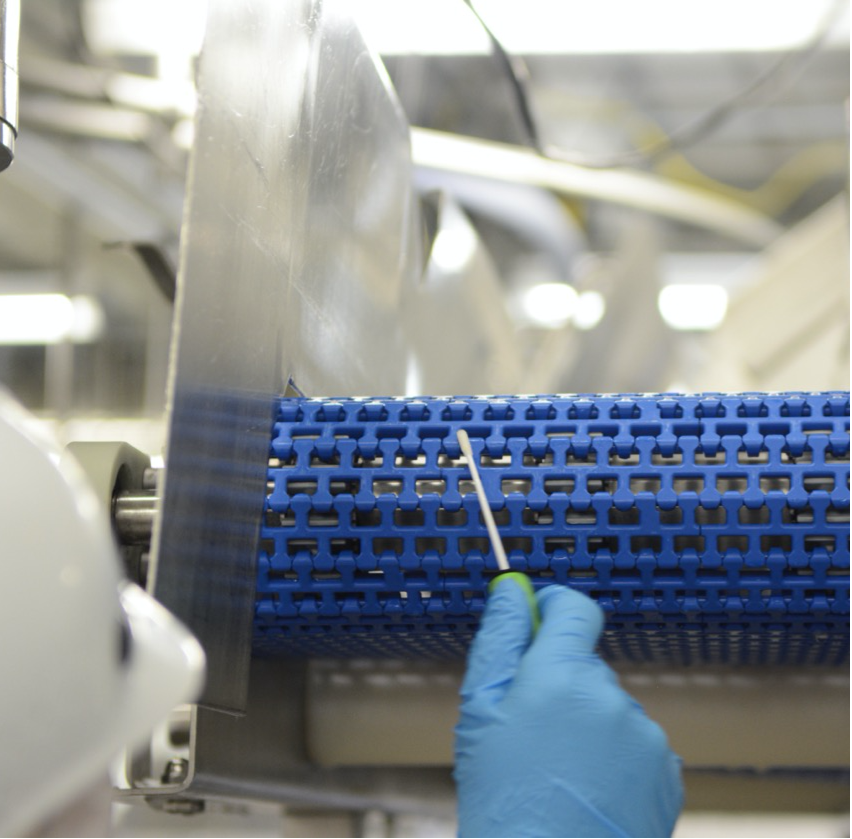Strengthen Your Food Safety Culture with a Risk Mitigation Mindset

Nearly every food manufacturer or producer has a food safety culture. The difference lies in its maturity, effectiveness, and the ability to evolve.
Enhanced food safety cultures can positively impact your businesses by reducing potential food safety risks and improving customer trust. A great way to strengthen your food safety culture is to introduce a risk mitigation mindset that empowers teams to identify and respond to issues before they become serious problems.
Often, food safety plans run on autopilot, following the same safety standards, procedures, and training. This level of consistent food safety program execution is extremely valuable, but it can fail to keep up with new threats, such as changes in the weather, supply chain interruptions, or new pathogens.
An ongoing risk mitigation mindset keeps everyone on the lookout for new threats before it’s too late. Before establishing this mindset, let’s examine the differences between risk assessments and mitigation.
A risk assessment, a bedrock HACCP principle, is a systematic process performed by a confident person to identify, analyze, and control hazards and risks in a situation or a place.
I use the term “confident person” because the assessment process requires someone trained and experienced in identifying risks. An inexperienced person with this responsibility could easily miss issues or improperly execute the process in a way that jeopardizes your organization’s viability. Some companies choose to perform risk assessments entirely with their internal team. Others elect to utilize a third-party food safety consultant to bring in fresh, outside perspective as part of their process. Either way can be effective.
Risk mitigation, on the other hand, is the process of understandingcertain risks and threats, accepting that they exist, and taking the appropriate measures to reduce their effects in case they happen. There are four ways to mitigate risks:
- Transferring risk allocation between different parties to address threats, such as transferring the responsibility of a pathogen-free ingredient to your suppliers.
- Accepting certain risks until they can be adequately addressed. This could be using old equipment that you know is difficult to clean and sanitize until the budget allows for a replacement.
- Avoiding risks whenthe consequences of certain risks are too high to mitigate, such as preventing Salmonella by heating chicken to an internal temperature of 165 degrees.
- Monitoring risks by keeping a close eye on different processes and teams to assess threats as they develop, such as regularly analyzing environmental swabs for Listeria.
Acknowledging the constant state of risk, we rely on teams to help us through the above methods. These groups include frontline workers, HACCP and food safety teams, internal auditing teams, and environmental monitoring teams.
Management teams must also set clear expectations, provide resources, and confirm accountability for performance and responsibilities for all parties.

Once you understand your risks, methods, and teams, use these seven best practices to bolster your food safety culture with a risk mitigation mindset.
- Teach the “why” behind the “what.”
Employee support is a key ingredient of a mature food safety culture. Food safety becomes a personal issue when employees connect their work to the foods their friends and family eat. For example, rather than telling employees they must wash their hands, and wear gloves and hairnets, explain how those actions ensure food safety and mitigate risks. Make the “why” part of your food safety training and celebrate employees who identify and report food safety risks.
Developing the sheer volume of adequate food safety training can be a challenge for many companies. In some cases, it can be wise to partner with a food safety training course developer. Just be sure they are industry-vetted, and their courseware is customizable to suit your specific needs. - Open communications at all levels.
Promote open, two-way communications across all of the teams discussed above. Ensure your communications flow evenly across all groups, including management and frontline workers. - Empower employees to speak up and take action.
Enable employees to suggest improvements and identify risks. Listen and allow them to share their concerns about food safety risks. Empower employees to say something when they see something. And give them the authority to shut down production if they have a food safety concern. - Encourage management to lead by example.
Motivating and inspiring frontline workers about food safety is difficult if management doesn’t care equally. Food safety and risk mitigation should be a unifying cause everyone cares about. Also, senior management can be held liable during lawsuits or even charged with a crime if the company sickens consumers through negligence. Senior management should remain aware of the state of food safety, routinely review food safety data with teams and provide accountability and resources as needed. - Verify actions with inspectors during audits.
When working with auditors during an inspection, use your food safety data to verify you’re maintaining a serious approach to food safety. Your written programs should describe what you’re doing while your reports and data provide proof of your actions. Make sure your records are complete, accurate, and timely. In addition to your risk assessments and corrective actions, you must demonstrate that your training is current and that employees have completed courses and comprehended the training. Internal audits should be your best friend to help discover and address issues before auditors find them. - Maintain ongoing food safety culture assessments.
Culture assessments measure a food safety culture’s maturity, providing insights into how well you’re managing hazards and risks. When conducted properly, they can help predict outcomes of culture strength and identify culture dimensions within the organization that need further focus and mitigation strategies.
We encourage annual assessments but recommend two to four times a year. Multiple assessments can help you create a baseline to build upon. Assessments are a powerful tool that measures food safety culture across the entire organization, from senior management to frontline workers. Pulse surveys go even further by frequently measuring the impact of culture mitigation strategies through the periodic survey responses of your employees. - Build culture champions.
The food safety teams discussed earlier can lead your risk mitigation efforts by measuring the effectiveness of your food safety culture and enabling positive change. They can help verify employees are competent and knowledgeable on food safety hazards and champion your efforts through ongoing education and outreach.
Intertek Alchemy can be a part of your culture champions with consulting experts who can help assess the maturity of your food safety culture and implement risk mitigation efforts. Plus, the Alchemy Training System can provide an all-in-once content and technology solution to ensure your frontline worker staff has the proper knowledge and confidence. Contact us to learn more.





